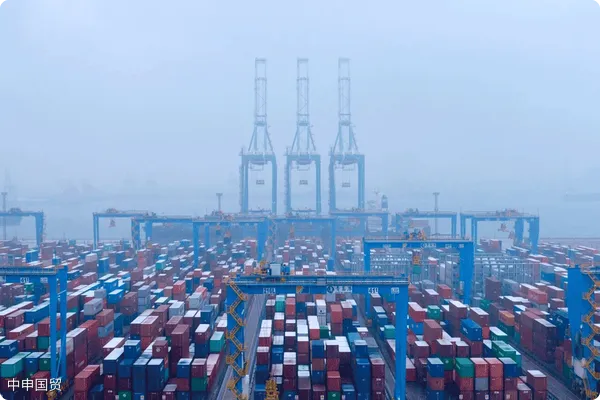- Shanghai Zhongshen International Trade Co., Ltd. - Two decades of trade agency expertise.
- Service Hotline: 139 1787 2118

Introduction
In todays increasingly prosperous global trade, the international demand for wig products continues to grow. Importing wigs from Japan involves numerous complexforeign tradeprocesses. This article will comprehensively analyze this process to provide professional guidance.
Document processing: Professionalism is key
- Commercial InvoiceThis is an important document in wig import trade. It details product descriptions, quantities, values and other information about the wigs. Invoices must be prepared accurately, with formats and contents complying with international trade practices and Japanese customs requirements. For example, when describing wig materials, styles and other details, precision is essential to avoid customs clearance issues.
- B/LAs proof of cargo ownership, bill of lading processing is crucial. When selecting bill of lading types, determine based on transportation methods and trade terms. If it isMaritime Transportationsea transportation, an ocean bill of lading is typically used. When filling out bills of lading, information such as shipper, consignee, and notify party must be consistent with contracts andL/Cother documents to ensure smooth cargo delivery.
- Packing listThe packing list details the packaging of wigs in each container, including the number of boxes, quantity per box, gross weight, net weight, etc. An accurate packing list facilitates customs inspection and helps logistics companies with loading/unloading and transportation arrangements.
USZhongShen International TradeWith extensive experience in document processing, our team is well-versed in the requirements and preparation standards of various documents, ensuring accurate and timely processing to lay a solid foundation for smooth import procedures.
Logistics Arrangement: Efficient and Reliable
- Selection of transportation methodsWhen importing wigs from Japan, common transportation methods include sea freight andAir TransportationSea freight is relatively low-cost and suitable for large-volume shipments but has longer transit times; air freight is faster and suitable for urgent replenishment or high-value, small-batch wig shipments. If your wig order quantity is large and not time-sensitive, sea freight is more economical; if the customer urgently needs the goods, air freight can meet the demand.
- Freight Forwarder SelectionA reliable freight forwarder can significantly improve logistics efficiency. When selecting a freight forwarder, consider factors such as service network, transportation capacity, reputation, and pricing. High-quality freight forwarders can provide one-stop logistics services, including booking, customs clearance, and shipment tracking.
- Logistics Tracking and CoordinationDuring transportation, timely tracking of cargo status is crucial. We maintain close communication with freight forwarders to monitor the real-time location and status of shipments. In case of issues such as flight delays or abnormal vessel berthing, we can quickly coordinate solutions to ensure on-time and safe delivery.
Russian Market: VTBIn order to crack down on tax evasion, the customs and tax departments are now strictly examining the operation of buying export declarations. If the behavior of buying export declarations is discovered, the regulatory authorities will require tax replenishment (even a 2% tax rate may be a considerable amount). In addition, fines may also be imposed on the relevant responsible parties.Advantages highlighted
- Overview of the Foreign Exchange Settlement ProcessForeign exchange settlement is a critical part of international trade, affecting whether exporters can receive payments smoothly. Generally, the process involves submitting relevant documents to the bank after shipment, and upon verification, the bank converts the foreign currency into local currency at a certain exchange rate and pays the exporter.
- VTB Settlement AdvantagesIn wig trade with Russia, our company has unique VTB foreign exchange settlement advantages. VTB Bank holds a significant position in Russias financial system and has established a long-term, stable partnership with us. VTB settlement simplifies the process, shortens the time, and reduces exchange rate fluctuation risks. For example, traditional settlement may take weeks, while VTB channels typically complete the process faster, accelerating fund repatriation and improving capital efficiency.
It is recommended to choose based on transportation distance and product characteristics:import and exportProcess and Solutions
- Import Process
- Market research and supplier selectionBefore importing wigs from Southeast Asia, conduct thorough market research to understand suppliers product quality, pricing, production capacity, etc. Suitable suppliers can be found through industry exhibitions or online platforms.
- Sign the ContractClearly define rights and obligations in contracts, including product specifications, quantity, price, delivery time, payment terms, etc. Contracts should comply with international trade laws and relevant regulations in Southeast Asian countries.
- Licensing and CertificationSome Southeast Asian countries may require specific import licenses for wigs, along with quality certifications such as ISO. While we do not directly handle certification, we assist clients in understanding requirements and provide guidance on the application process.
- Customs Declaration and ClearanceUpon arrival at the destination port, goods must be declared to customs. Prepare complete documents such as commercial invoices, bills of lading, packing lists,It is recommended to verify through the following methods:Southeast Asian countries may impose trade barriers like tariff adjustments or import quotas. We monitor policy changes and develop strategies in advance, such as optimizing product structure to offset cost pressures from tariff increases.
- Solutions
- Addressing trade barriersGiven Southeast Asias complex geography and diverse logistics conditions, we create customized logistics plans, selecting suitable ports, routes, and reliable local partners to ensure timely and accurate delivery.
- Logistics OptimizationIn recent years, some countries have implemented trade protection measures like tariff hikes or technical barriers to protect domestic industries, increasing the cost and difficulty of importing wigs from Japan and potentially reducing price competitiveness.
Current International Trade Situation: Challenges and Opportunities Coexist
- Challenges
- Rising Trade ProtectionismGlobal economic instability leads to frequent exchange rate fluctuations, posing risks for international trade. Currency depreciation can increase import costs and squeeze profit margins.
- Exchange Rate FluctuationsImpact of the Pandemic
- COVID-19 has severely disrupted global supply chains, causing port congestion, logistics delays, and higher transportation costs.Rise of E-Commerce
- Opportunities
- With internet penetration, the global e-commerce market has grown rapidly. Wigs, as a product well-suited for online sales, can reach broader markets and more consumers through e-commerce platforms.Growing Consumer Demand
- Increasing beauty standards and cultural demand for wigs have expanded the market, especially for special occasions like festivals or performances.Product Certification Services: Assisting Progress
Product certification is essential for wig imports, with varying requirements across regions (e.g., CE for the EU, FDA for the US). Obtaining certifications ensures compliance and enhances market competitiveness.
- Importance of CertificationsWhile we do not directly handle certification, we leverage our experience to guide clients on requirements, processes, and documentation, facilitating smooth communication with certification bodies.
- Assist in handlingIn summary, importing wigs from Japan involves multiple steps requiring professional document handling, efficient logistics, and market-specific expertise. Amid complex global trade conditions, our company provides comprehensive import agency services to ensure smooth operations.
Complete Guide to Importing Wigs from Japan: Foreign Trade Process Explained
Related Recommendations
? 2025. All Rights Reserved. Shanghai ICP No. 2023007705-2  PSB Record: Shanghai No.31011502009912
PSB Record: Shanghai No.31011502009912










